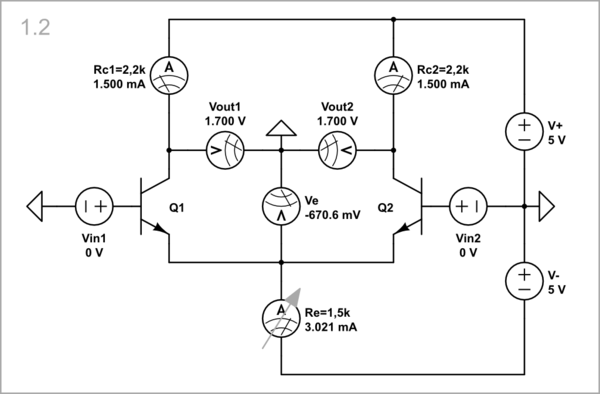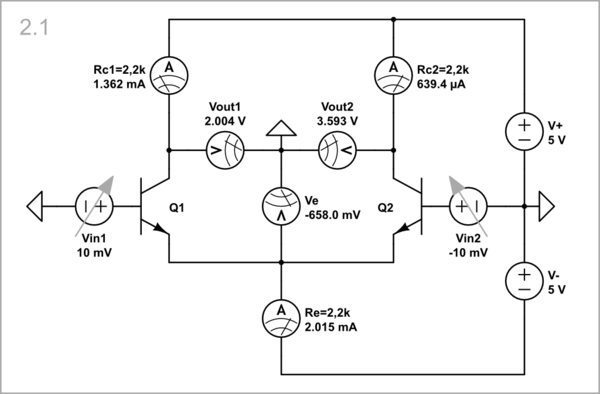

simulate this circuitsimulate this circuit – Schematic created using CircuitLab


simulate this circuitsimulate this circuit


simulate this circuitsimulate this circuit


simulate this circuitsimulate this circuit


simulate this circuitsimulate this circuit
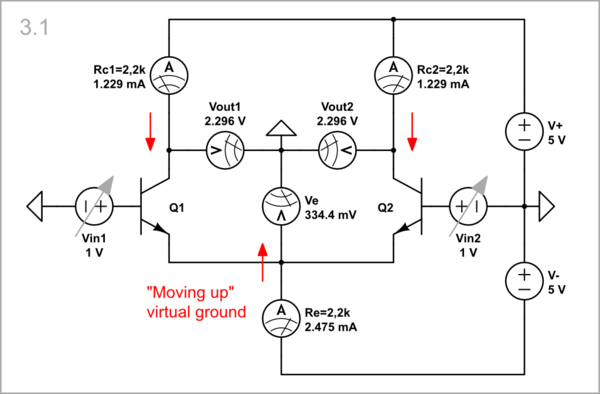

simulate this circuitsimulate this circuit


simulate this circuitsimulate this circuit


simulate this circuitsimulate this circuit


simulate this circuitsimulate this circuit
The result is the same as in the pure differential mode above - the output voltages change significantly because the midpoint between the emitters is moved but still "fixed"; it acts as a "shifted virtual ground".
Improvement
As can be seen from Schematics 3.1 and 3.2, the output voltages, although not much, still change when we change the two input voltages simultaneously (common mode). This is a problem because we usually use one of them as a single-ended output.
Increased Re and V-
The straightforward solution invented a century ago was to simultaneously increase Re e.g. to 500 kΩ, and V- to -1000 V (although unrealistic); hence the name "long-tailed pair".
Vin1 = Vin2 = 0 V: Then the emitter and collector currents, and the collector voltages will be the same as in the initial Schematic 1.1.

Vin1 = Vin2 = 1 V: But when we simultaneously increase both Vin1 and Vin2...

Vin1 = Vin2 = -1 V: ... or simultaneously decrease them...
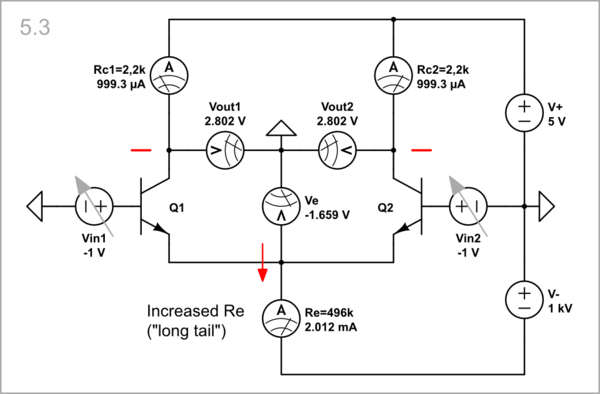
... nothing will change. In other words, the common-mode input voltage gain is 0.
Dynamic Re
But later they thought that it was not reasonable to increase the voltage V- so much and came up with a smarter solution - to change Re simultaneously and in the same direction with both Vin... to make it dynamic. Let's simulate it by replacing the constant resistor Re with a variable one.
Vin1 = Vin2 = 1 V: Now, when the input voltages rise to 1 V, we increase Re to 2.7 kΩ...

Vin1 = Vin2 = -1 V: ... and when the input voltages drop to -1 V, we decrease Re to 1.7 kΩ.
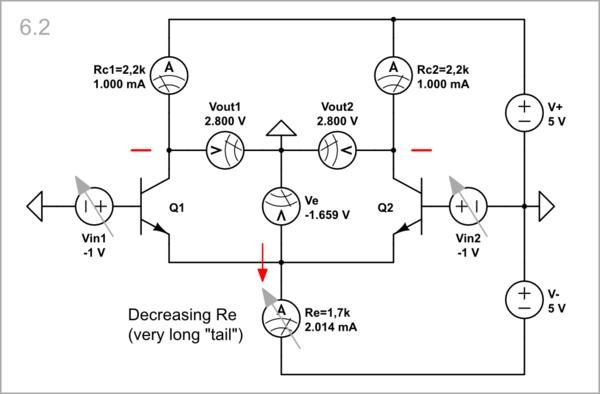
The result is even better than above - absolutely nothing changes.
Emitter current source
In fact what we have done above is what they call a "current source"; only it is manually controlled. Let's replace it with a standalone current source from the CircuitLab library and repeat the above experiments.
Vin1 = Vin2 = 0 V: Whether the input voltages are 0 V...

Vin1 = Vin2 = 1 V: ... or 1 V...

Vin1 = Vin2 = -1 V: ... or -1 V...

... the result is the same - no change.
Transistor current source
Let's finish this story about the famous long-tailed pair with a practical implementation of the emitter current source. We use the property of the transistor at a constant input (base-emitter) voltage to behave as a dynamic "resistor" that keeps its output (collector) current constant.
Vin1 = Vin2 = 0 V: Initially it has "resistance" 2.2 kΩ...

Vin1 = Vin2 = 1 V: ... then 2.7 kΩ...

... and finally 1.7 kΩ.
Vin1 = Vin2 = -1 V:
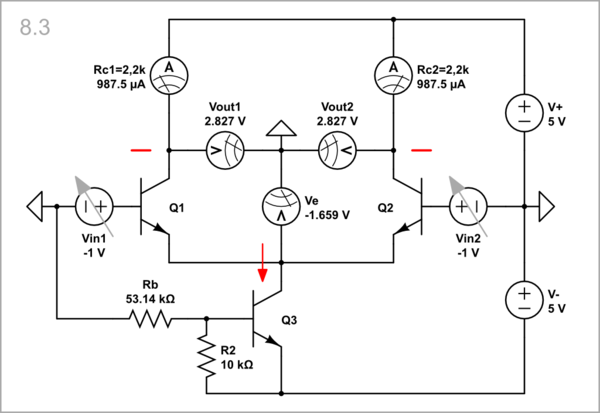
The result is almost the same - there is a small change (the transistor is real, though).


